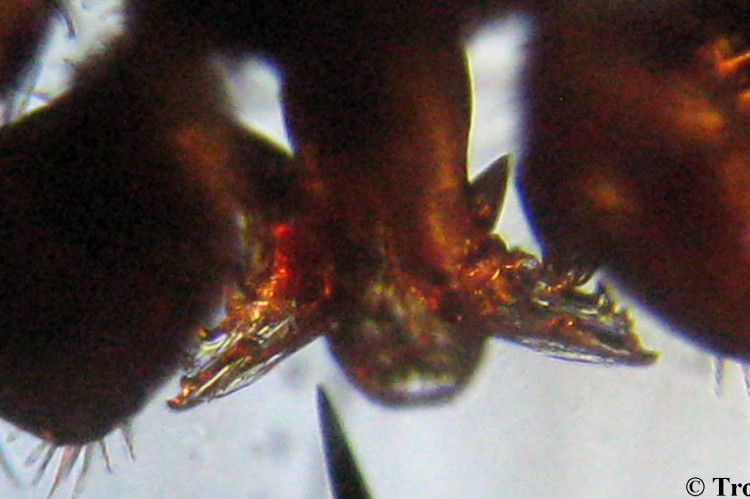Eschscholzia californica is the California poppy.
"More than YOU want to know?

That might be punny but it is also true.
No account of forest OR xeric life would be complete without mentioning ticks.
Amblyomma cajennense
I encountered this pair, a male and a female, while doing field work in South Texas, rather than here.
Dermacentor occidentalis
Pacific Coast tick
This is the only one of these I’ve ever found here at home in over a dozen years of living here. This one, shown inside of a plastic bag, was noticed hanging spread-eagle from a blade of grass in June 2014. The mouthparts are considerably shorter than the ticks shown above or below.
Ixodes pacificus
One of the tick species from home. It MIGHT be the most common one that lives here.
It amazes me how small ticks can be. This is that last male Ixodes shown above; after it was dead.
Its feeding implements are the featured image.
Above is an adult male Ixodes pacificus.
Below is a larvae with six legs rather than 8 legs like a nymph or an adult. Larvae can supposedly only transmit Bartonella.
For a sense of scale, those are human hairs.
Hopefully this one was a larvae but I can’t tell for certain if it has 6 or 8 legs. It was destroyed during removal.
This one was clearly a nymph. Bigger than a larvae but still too small.
This is that same, now dead, nymph of Ixodes pacificus after having its meal interrupted.
This nymph was feeding for a bit longer
This nymph has been fed longer still
And another that was somehow missed a whole day!
Notice the hugely engorged Ixodes on the right ear of this woodrat?
The Iris species can readily pollinate each other so natural hybrids are common anywhere that more than one species occurs.
And another
All of the naturally occurring Iris species in the PNW are beardless.
Compare those with a couple of bearded garden hybrids.
Asarum hartwegii
This is one of the Wild ginger species; variously referred to as Marbled wild-ginger or Hartweg’s wild-ginger.
These images are not from home but rather are from Shasta County near Big Bend.
I was told that the flower is pollinated by a beetle.
Monardella purpurea
Also known as Siskiyou monardella, Serpentine monardella & Serpentine Coyote Mint
It occurs in some of the sunny open rocky areas in the serpentine soils of the mountain pass above us.
